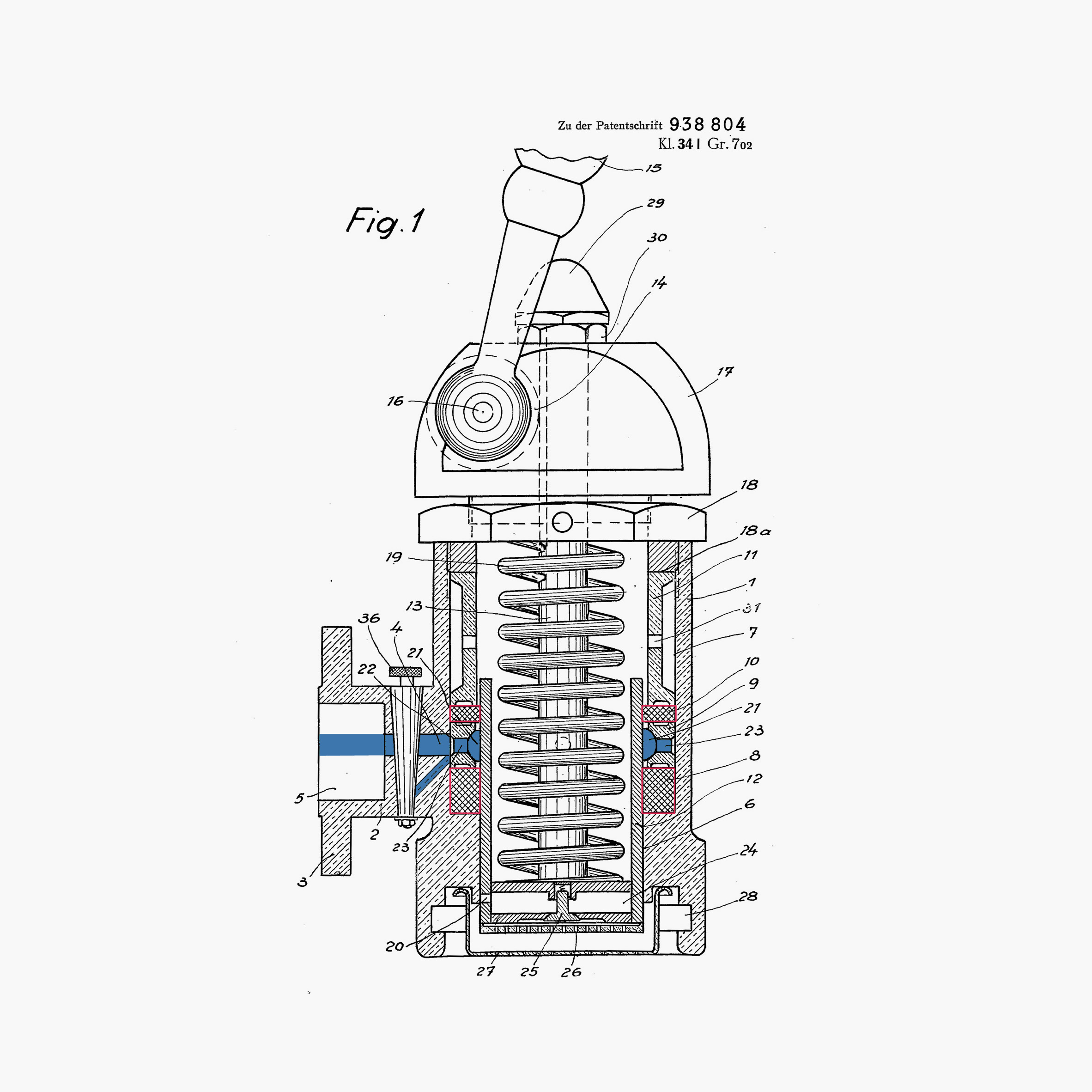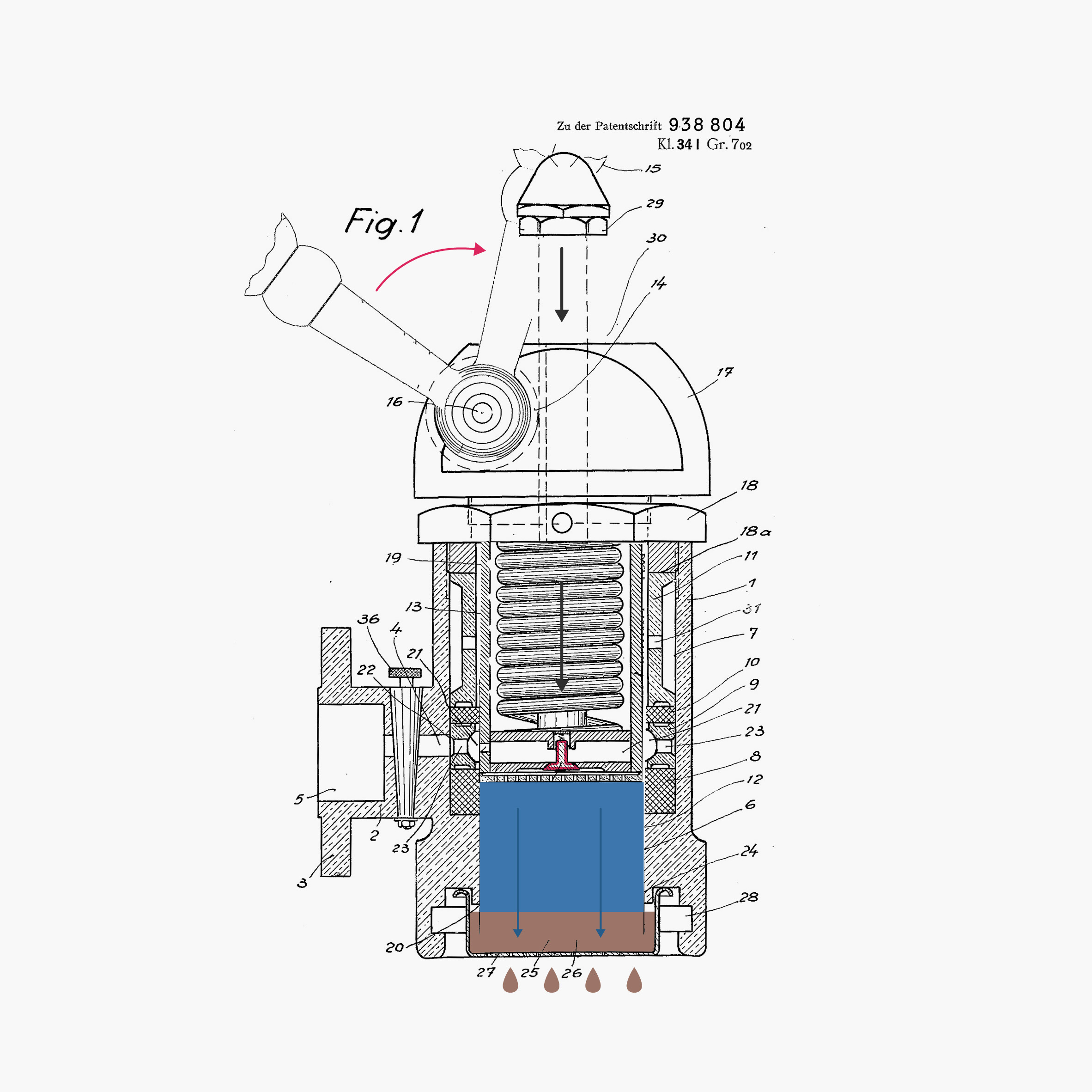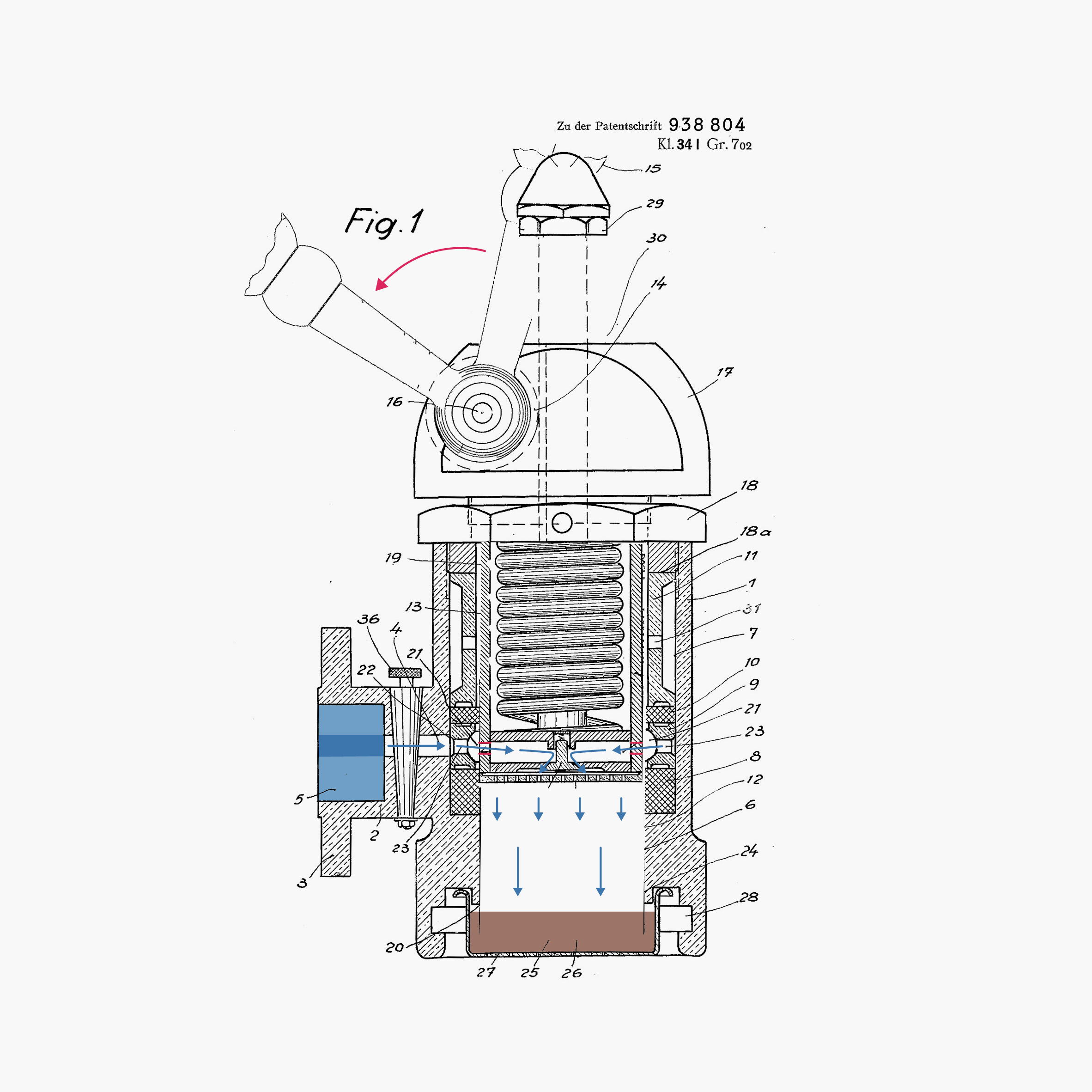When a modern lever machine sits idle, a narrow band of hot water is allowed to syphon around the outside of the piston in order to keep the group heads hot. For this reason, the components of the plunger are usually made of brass because of its excellent thermal conductivity. (We will elaborate on thermosyphons in the following chapter.) Rather than using the thermo syphon system, Gaggia’s Clássica o modelo dependia da pressão do vapor na caldeira para empurrar a água até a cabeça do grupo. No entanto, tanto o sistema antigo como o sistema moderno utilizam água quente para manter os grupos quentes.
 A cor azul mostra a estreita faixa de água ao redor do êmbolo de latão. Os quadrados vermelhos e os grandes anéis de vedação projetados para fazer uma vedação estanque à água soam na parte externa do pistão.
A cor azul mostra a estreita faixa de água ao redor do êmbolo de latão. Os quadrados vermelhos e os grandes anéis de vedação projetados para fazer uma vedação estanque à água soam na parte externa do pistão.
On Gaggia’s machine, when the barista pulls the lever, the plunger moves upwards a distance of around 50 millimetres. The plunger slides up to a position inline with the band of water surrounding the grouphead and the holes in the sleeve allow water to pour onto the coffee.
Nenhuma pressão se acumula dentro do grupo até que a câmara acima do leito de café esteja totalmente saturada com água, sem espaço para ar entre o êmbolo e o topo do leito de café. Demora cerca de 5 segundos para a câmara acima do disco para encher com água e mais 5 segundos para o disco to become fully saturated. That means Gaggia’s lever machine performed a 10-second preinfusion. (You can learn more about the benefits of preinfusion aqui, in Barista Hustle’s Advanced Espresso course.)
 Nota: Um importante aviso de saúde e segurança. It’s extremely important to have a firm grip on the lever when operating any kind of lever machine. If the lever slips out of your hand it can catapult back into the upright position and cause injury.
Nota: Um importante aviso de saúde e segurança. It’s extremely important to have a firm grip on the lever when operating any kind of lever machine. If the lever slips out of your hand it can catapult back into the upright position and cause injury.
Gaggia’s system was able to reach pressures in excess of 11 bars of pressure.
